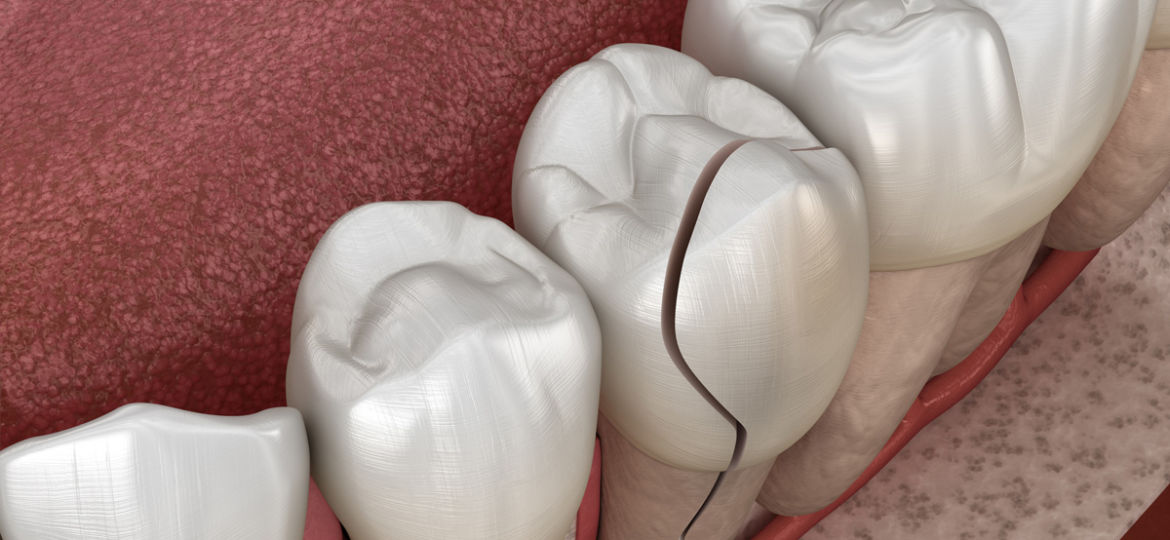
Have you ever had pain when you were chewing food? This is one indication you may have a cracked tooth. We’ll explain what causes cracked teeth, how they are repaired and show you some before and after photos.
What causes cracked teeth?
- Missing tooth structure (large fillings). The less natural tooth structure, the more vulnerable a tooth is to fracture. If you have very large fillings, then your dentist may recommend a crown to prevent the tooth from fracturing.
- Clenching and grinding your teeth (especially at night when you might not realize it!). When we clench/grind our teeth, it puts an unbelievable amount of force on our teeth. Our teeth are designed to withstand the normal forces of chewing, but they are NOT designed to withstand the extra forces of clenching and grinding, and they will wear, crack, and break over time.
- Trauma caused to your teeth
Scenario One Example
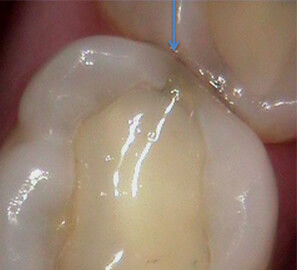
This picture shows a molar tooth that has a very large existing tooth-colored filling. When this much natural tooth structure is missing, the tooth is more likely to develop cracks and fractures over time.
The blue arrow shows a fracture in the tooth. This individual complained of pain upon chewing. When a tooth has a fracture, it will often flex when chewing, which causes the pain.
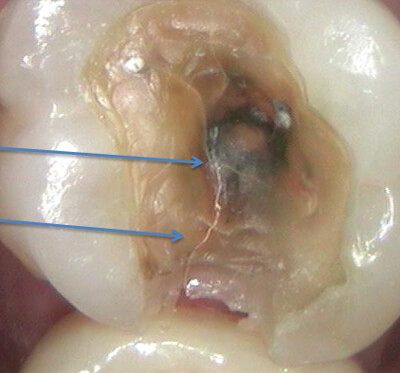
There is no way know the size/severity of a crack until the existing filling is removed. The next photo shows the large fracture (blue arrows) running the length of the tooth.
Scenario Two Before & After
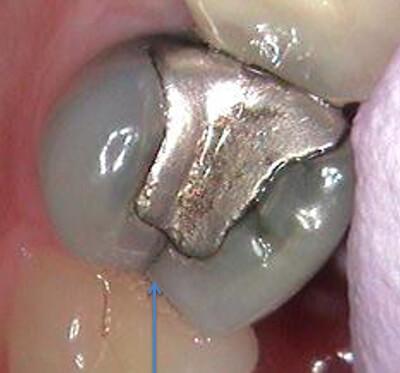
The before picture shows an existing old metal filling and the blue arrow points directly at the crack in the tooth.
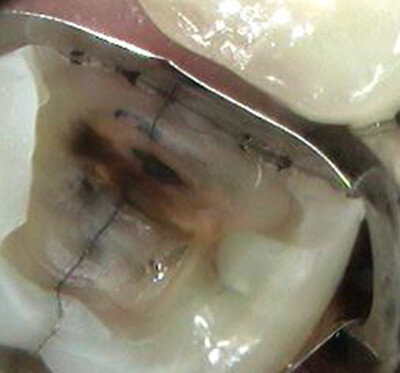
The second photo shows the crack throughout the tooth. This particular one has stained overtime. It is a high risk for splitting right down the middle.
How are cracked teeth treated?
First off – prevention! If you have a clenching and grinding habit then a “night guard” can protect your teeth from the damaging effects of this habit. If a tooth already has a large crack, then a crown is needed to protect the tooth from splitting. Putting a crown on a tooth is like putting “hoops on a barrel” because it helps hold the tooth together instead of allowing it to flex. If a crack is very large and has gotten close to the nerve of the tooth, then the tooth may need a root canal in addition to the crown.
If you have a cracked tooth or are concerned about about the strength of your tooth, give us a call and we will be happy to set up a consultation! It is very important to diagnose a cracked tooth before it gets too big as the tooth may need to be extracted. If they are caught early they can be successfully treated!

